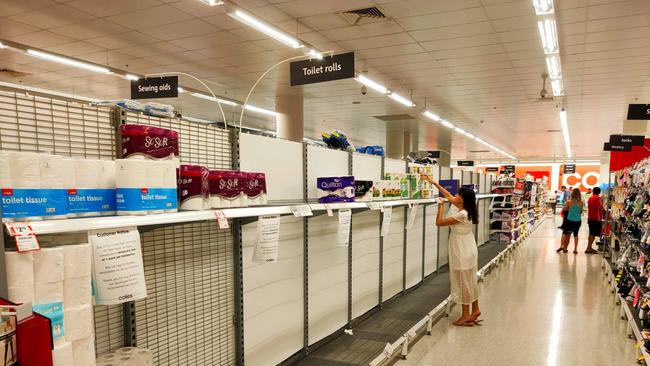From adversity comes opportunity
This past year we’ve witnessed what panic does to public confidence in times of crisis, no matter how strong a supply chain is.

This past year and all its adversity will provide the best learning curve our sector has experienced. I am proud of the way the industry that Ports Australia represents mobilised to protect its people, the Australian people, and its vital function in our supply chain. There are important lessons to be learnt, though.
We’ve witnessed what panic does to public confidence in times of crisis, no matter how strong a supply chain is. Early during the pandemic period, the Ports Australia offices even had calls from journalists asking whether ports would be shut down due to COVID-19.
Ports were quick from the word “pandemic” to implement all the necessary health and safety measures, whether they were mandated by government or not. Increased cleaning, screening, digitisation, and social and mental wellbeing initiatives were just some of the ways ports ensured their operation of serving the nation continued.
But we’re still left with some problems. Panic buying at supermarkets has unnecessarily burdened a well-functioning supply chain. Knee-jerk reactions to case-number spikes have seen critical staff such as pilots (both marine and air) severely delayed in their ability to cross borders and get to work. Blanket bans on shore leave and crew changeovers have trapped seafarers on vessels for months, posing serious threats to human health and wellbeing, as well as trade continuity.
Fortunately, common sense has prevailed among some industry members across Australia. The Port Authority of NSW acted with care and professionalism despite challenging circumstances presented by cruise ships earlier this year. Pilbara Ports Authority is calling for government support to utilise charter flights to fly seafarers between Manila and Port Hedland International Airport. NSW Ports partnered with NSW Health to trial a proof of concept for rapid mobile COVID-19 screening for port workers and ship crews at Port of Botany. Maritime Safety Queensland thought laterally to solve problems pragmatically, such as managing COVID-19 cases on board incoming cargo ships, or establishing a best practice method of conducting crew changeovers up and down the Queensland coastline.
Analysis will be the most irrefutable method of evaluating the ports industry’s response to the pandemic. We can analyse how port throughput has been affected, how ship visitation has changed, how the spread of our commodity trade has varied.
This exercise is an invaluable one for a wide variety of people, not only those in the industry,
but governments, financiers, journalists, scholars. With this considered, Australia’s ports have begun a consolidated effort to dramatically revolutionise data representation and analysis for the industry they serve.
‘The idea of the Trans-Tasman Bubble has been bounced constantly between politicians and media both local and across the ditch. We at Ports Australia see increased value in extending that proposition to a Pacific Bubble’
The Ports Australia Trade Statistics Portal is an industry-first resource which provides specific, individualised data sets on a routinely updated basis. In the past, the groups mentioned above would wait for their annual data to be released through one of the various government agencies responsible for data collection.
While that data is reliable and comprehensive, it simply lacks the currency needed for constant and unique analysis, which is more relevant than ever now in light of COVID-19.
The portal is now being developed to show port trade data on a month-to-month basis, unlocking the potential for trend analysis. I commend the work of the port personnel around the country for their dedication to building such a resource, and I implore all to utilise it as a learning tool to better understand how ports serve Australia.
During recent months, the idea of the Trans-Tasman Bubble has been bounced constantly between politicians and media both local and across the ditch. We at Ports Australia see increased value in extending that proposition to a Pacific Bubble.
In less than a year, eight ports from across the Pacific region have joined Ports Australia as International Associate Members, during which time we’ve brought their unique industry knowledge to our working groups and built relationships around shared challenges. Some have asked whether this initiative was to bolster ties with these nations for the purpose of security and international relations, but our motivations derive from the value we see in sharing unique knowledge across borders.
Based on our experience, we believe the same knowledge sharing and relationship building has significant potential for use on a greater scale through a Pacific Bubble.
Sharing best practice and maintaining a level of consistency with these nations, especially when it comes to biosecurity during COVID-19, carries a great deal of worth for all parties.
Where one Australian port has an unsolved problem, one Fijian port may well have the solution. The same rationale can apply to national COVID-19 management, tourism revitalisation, environmental challenges, or infrastructure development.
COVID-19 could provide the perfect setting for us to build a resilient and sustainable future for our Pacific region.
Government has already made the proactive decision to learn and grow from these trying times, having invited Ports Australia and other supply chain partners to contribute to the Inquiry into the implications of the COVID-19 pandemic for Australia’s Foreign Affairs, Defence and Trade.
If we choose to learn and grow from this, we’ll have a sector and supply chain even stronger than we began with.
Mike Gallacher is chief executive officer of Ports Australia.
